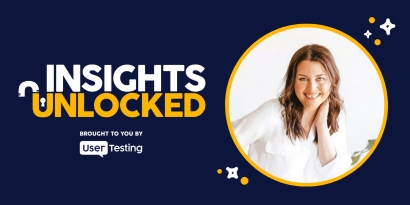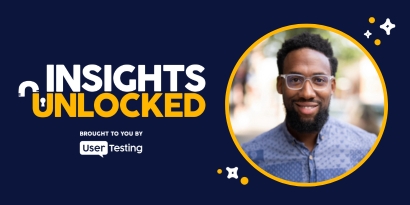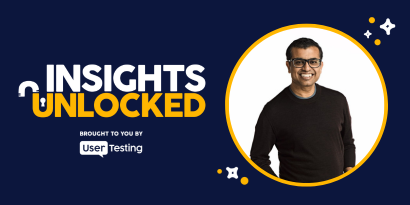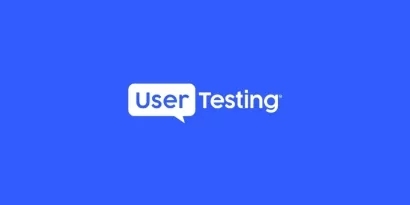
Episode 43 | June 06, 2022
NFT community engagement and Web3 loyalty with Ethan Song
Explore how NFTs and Web3 are reshaping brand loyalty and community engagement in this episode with Rare Circles CEO, Ethan Song.
From fandom to ownership: How NFTs are unlocking new levels of community engagement
Imagine if your Starbucks rewards points could be traded like baseball cards or if your favorite concert ticket granted you lifelong VIP access and exclusive merch drops. Welcome to the next frontier of customer experience—NFT community engagement—where fans aren’t just followers, they’re stakeholders.
In a recent episode of Insights Unlocked, Ethan Song, co-founder and CEO of Rare Circles, shared how Web3 technologies like NFTs are transforming how brands connect with their audiences. His insights offer a bold, forward-looking vision: one where digital ownership fuels deeper loyalty and where fans evolve into active participants in the brand journey.
Reimagining customer loyalty with NFTs
For decades, loyalty programs have been a one-way street. Customers earn points, redeem rewards, and start over. But Ethan envisions a future where those loyalty perks live on blockchain rails—portable, tradable, and meaningful.
“By enabling points to become NFTs or tokens, they’re tradeable and can be exchanged,” Ethan explained. “It allows fans to engage not just with the brand but with each other.”
This unlocks a revolutionary concept: Web3 loyalty programs. Instead of locking value inside an app or platform, NFT-based systems can move fluidly across ecosystems. A die-hard Starbucks fan, for example, could trade their NFT for perks at a new local matcha café, or gift it to a friend.
It’s a seismic shift from traditional brand-to-customer dynamics—toward community-powered experiences.
Guide
Keys to impactful designs that drive goal conversion rates
What makes a good NFT? Think identity, not hype
To the uninitiated, NFTs can seem like abstract digital trinkets. But Ethan likens them to concert tees or collectible sneakers: tangible representations of belonging, affiliation, and status.
In the podcast, Ethan responds to clips from consumers discussing what makes NFTs valuable. Their answers emphasized two themes: ownership of something unique, and belonging to a community. These aren’t buzzwords—they're pillars of emotional engagement.
“A brand is not that different from music or a movie,” Ethan said. “Culture and values are embedded into products.”
Think of an NFT as the modern equivalent of a backstage pass. It’s proof of membership in a tribe, and it often comes with access to VIP experiences, community forums, and even governance votes.
Here’s what consumers are looking for in an NFT project:
- Transparent leadership (i.e., “doxxed” founders)
- Clear roadmaps with long-term value
- Original, high-quality design
- Active and engaged communities
These align with NFT access passes, which go beyond speculation to deliver real utility.
From fashion to the frontier of Web3
Ethan’s journey to Web3 wasn’t a straight line. Before Rare Circles, he co-founded Frank & Oak, a direct-to-consumer (DTC) fashion brand known for its personalization and sustainable ethos. So how did he leap from clothing to crypto?
“The innovation at Frank & Oak wasn’t just the clothes—it was the way people experienced the brand,” he said. “Rare Circles is about empowering creators to build experiences in Web3 that are just as personal and powerful.”
Just as Shopify and Mailchimp democratized DTC e-commerce, Rare Circles aims to democratize digital ownership. Its platform makes it easy for anyone—creator, brand, or entrepreneur—to launch NFT memberships without needing to code.
This shift echoes a broader trend: the creator economy evolving into the ownership economy, where fans and followers play a direct role in a brand’s success.
Why qualitative feedback matters more than ever
As Ethan points out, launching an NFT project isn’t about flashy tech—it’s about solving real human problems. That’s why customer feedback remains the north star, even in this decentralized era.
“Your biggest product insight probably hasn’t come yet,” Ethan noted. “That’s why listening—especially to your power users—is so critical.”
In traditional e-commerce, quantitative data—clicks, conversions, A/B tests—often tells the story. But in the world of NFTs and community-led growth, qualitative insight is gold. It's the open-ended feedback, the why behind the what, that reveals unmet needs and next-gen ideas.
Ethan emphasizes the importance of segmentation too. Not every user is the same, and product-market fit happens in layers. Tailoring NFT memberships to different user types (superfans, newcomers, collaborators) can unlock more personalized value.
Bringing Web3 into everyday experiences
Perhaps the most exciting part of the conversation was Ethan’s glimpse into the future. He sees a world where NFT experiences are woven into the fabric of everyday life—sometimes invisibly.
“Your first NFT might be a concert ticket that comes with VIP perks. Or maybe Instagram turns a photo into an NFT and you don’t even realize it,” he suggested. “It’s coming, and it’s going to feel natural.”
This isn’t science fiction. It’s already happening:
- NFT tickets to festivals that unlock meet-and-greets
- NFT-enabled loyalty programs that integrate across brands
- Tokenized community memberships for superfans
Just as QR codes went from gimmick to mainstream, NFTs for brand loyalty may follow a similar arc—quietly embedding themselves in our everyday routines.
The psychology behind NFT community engagement
At its core, the rise of NFTs is about human behavior. People want to be seen, valued, and connected. They want to show off their fandom and be part of something bigger than themselves.
“It’s the same emotion that drives someone to get a tattoo of their favorite brand,” said Ethan. “It’s loyalty at the deepest level.”
That metaphor isn’t hyperbole. In fact, the episode opened with a fun exchange about which brand tattoo Ethan would get (he picked “Nada,” a running brand he helped found). This segued into a broader discussion about how certain brands—especially those that build strong communities—earn tattoo-worthy loyalty.
NFTs, then, are the digital version of that ink. They signal commitment, identity, and pride. And for brands, that’s the holy grail.
Lessons for marketing, UX, and product leaders
If you’re a product, UX, or marketing leader, here are a few takeaways from this episode:
- Don’t chase hype—design for utility. NFT memberships should offer real value: access, exclusivity, or rewards.
- Listen deeply. Your most valuable insight might come from a power user with a bold idea.
- Segment your users. Different audiences need different onramps into your NFT ecosystem.
- Think cross-platform. Loyalty shouldn’t stop at your app. NFTs can move across communities and brands.
- Design for emotion. Ownership is powerful. Build features that let users show it off.
These strategies can help you move from passive engagement to NFT-powered community engagement, turning customers into co-creators.
Final thoughts: optimism in a crypto winter
The episode wrapped with Ethan reflecting on the current state of Web3—one marked by cautious optimism after the crypto hype cycle cooled.
“We’re still so early,” he said. “It’s like being in the 90s of the internet. We don’t know yet if this will succeed—but if it does, it could redefine ownership and give entrepreneurs new ways to thrive.”
That’s a bet many innovators are willing to take. Because if the next era of brand engagement is built on transparency, community, and shared value—NFTs might just be the bridge we didn’t know we needed.
Episode links:
- Benchmarking your content: In this on-demand webinar, Bobbie Wood, co-founder and CEO of the UX Content Collective, joins UserTesting’s Senior Content Strategist Jennifer DeRome to discuss how to benchmark your content to track progress and prove ROI. They cover what benchmarking is, why it's important, how to establish a baseline, and how to analyze and share results.
- The complete guide to user interviews: This comprehensive guide explores how user interviews can improve the product development lifecycle. It covers different types of user interviews, when to conduct them, and how to run successful sessions. The guide also discusses how UserTesting’s Live Conversation can make user interviews easier.
- Calculating the ROI of UX research in your organization: In this Insights Unlocked episode, we discuss the value of UX research and how organizations can quantify its impact, aligning with the podcast's emphasis on user feedback and community engagement.
- How to conduct user interviews for better UX: This blog post offers practical advice on conducting effective user interviews, highlighting their role in gathering qualitative feedback—a crucial element in developing user-centric Web3 platforms.









